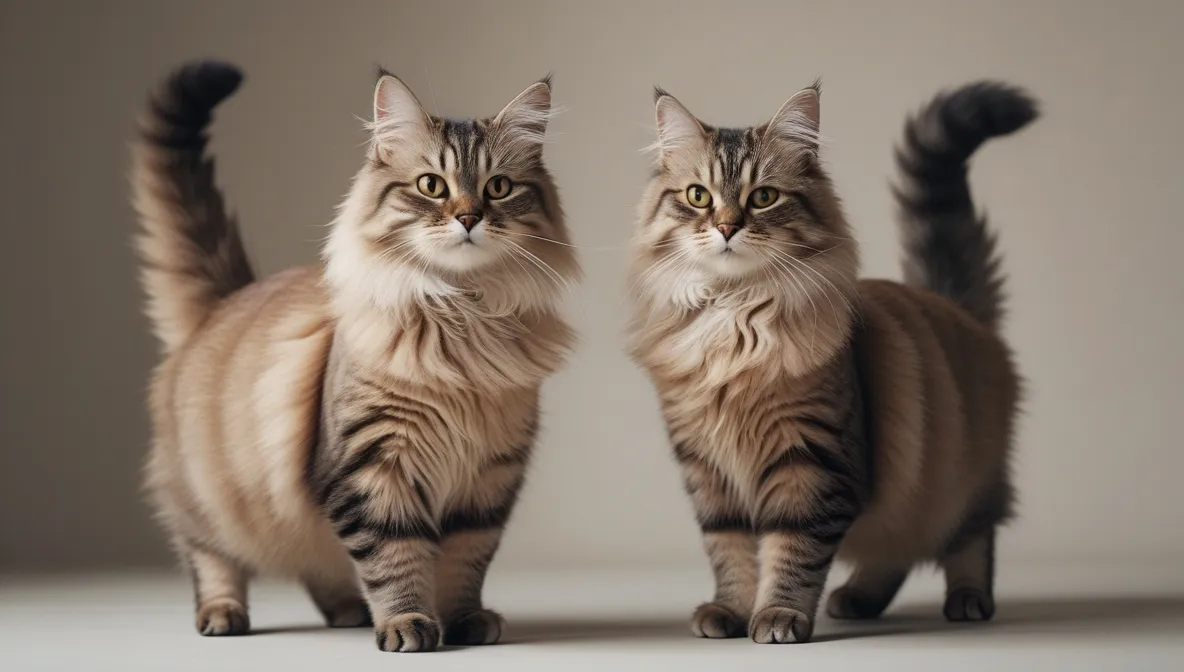A Short Guide for Cat Owners
Understanding Cat Body Language for a Stronger Bond
Knowing how to read your cat’s body language is essential for understanding their emotions and behavior.
Cats communicate primarily through body posture, tail movement, ear position, and facial expressions. Learning these signals will help you respond appropriately, ensuring your cat feels comfortable, safe, and happy. Below are some common feline postures and what they mean.
Playful and Curious Cat Postures
- Crouched "Play Bow" Position: If your cat crouches low with their ears slightly forward and their back end raised, they are in a playful mood or getting ready to pounce like a hunter. This is often seen during playtime, and it’s a great moment to engage with interactive toys.
- Slight Arch with Ears Up: When your cat arches their back slightly and their ears are perked up, they are curious but cautious. This posture is common when they encounter something unfamiliar, such as a new object, person, or environment.
Friendly and Affectionate Cat Postures
- Upright Tail and Ears: A cat with an upright tail and ears is feeling happy, friendly, and confident. This is a clear sign that they are open to interaction, whether it’s petting, playing, or simply spending time with their human. If your cat rubs against you in this position, it’s their way of showing affection and trust.
- Exposed Belly: If your cat rolls onto their back and shows their belly, they feel safe and trust you completely. However, this doesn’t always mean they want belly rubs—some cats enjoy them, while others may react defensively. Pay attention to their reactions before petting.
Excited and Alert Cat Postures
- Swishing Tail, Upright Ears, and Whiskers Forward: When your cat's tail swishes gently and their ears are up, they are excited and happy. This often happens when greeting their owner, anticipating food, or getting ready to chase a toy. A slow-moving tail may indicate curiosity, while a rapid swish suggests heightened excitement.
- Erect Tail and Ears: A cat standing normally with their tail and ears up is relaxed and confident. This is a great time to bond with them through play, gentle petting, or shared quiet moments. If their tail is waving slightly, they are alert but calm.
Defensive and Stressed Cat Postures
- Flicking Tail and Flat Ears: A flicking tail combined with flat ears indicates annoyance, stress, or excitement. Observe the situation to determine whether your cat needs space or is simply expressing playful energy. Rapid tail flicking and pinned-back ears may mean they are overstimulated or upset.
- Arched Back, Flat Tail, and Ears Pinned Back: If your cat arches their back, keeps their tail down, and pins their ears back, they are likely scared or feeling threatened. This defensive posture is a sign that they might lash out if provoked. Try to remove any stressors and give your cat a safe space to relax.
- Ears Back, Tail Down: This defensive stance suggests that your cat is anxious or on edge. If your cat frequently adopts this position, look for possible stressors such as loud noises, new pets, or unfamiliar people, and try to reduce their anxiety.
Strengthening Your Bond Through Cat Communication
By closely observing your cat’s body language, you can better understand their emotions and create a more trusting and loving relationship. Responding appropriately to their signals will make them feel secure and strengthen your bond.
Tags
Advice


.jpg)